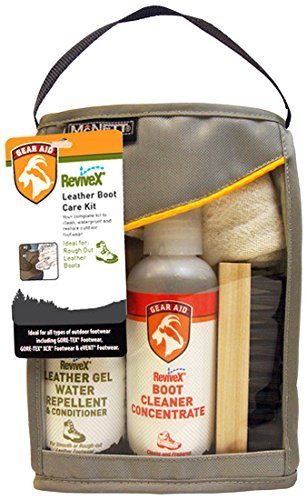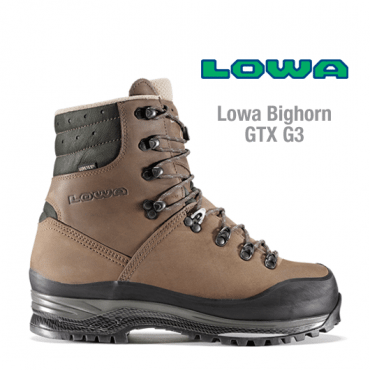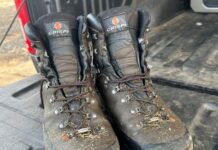
Boot Break-in and Maintenence
by Matt Wymer, Rokslide Prostaff
The most important part of solid foot care is taking the time to test your system before your big hunt. It is often hard to mimic the terrain you will be hunting, but every effort should be made to come as close as possible. Spend some time in your boot before hitting the mountains. For this article, I interviewed Stephen Lathrop of Lathrop & Sons. They have a combined 50 years experience in the science of podiatry and orthotics, much of this related to hunting boots.
I asked Stephen about breaking in boots. He said that there is a myth out there that new boots require 50 miles before they are broke in. It is his experience that a properly fitted boot system (boot, footbed, socks) should be comfortable the first time you lace them up. As far as break-in, he recommends a two-to-four week process depending on the boot.
A shorter and/or blended material boots should be worn three days a week for 2-3 weeks and then taken on several short hiking trips. Taller boots, and/or those of all-leather design, should be worn three days a week for 3-4 weeks, and then hiked in to analyze fit. Throughout this process you are either confirming fit or finding out the fit is not right. Upon completion, it is either time to start over and get a better fit, or head out and really push the boot.
Another question I had for Stephen was boot care. He stated that common problems include the rubberized rand separating from the leather, stitching failure, and dried out leather. These issues can be reduced by using water-based boot treatments and carefully following the manufacturer’s care and maintenance guidelines.
Improper use of heat to dry your boots can lead to damage. Most stitching is a nylon material and—when heated—can shrink, stretch, or melt. Additionally, wet leather can be dried too quickly resulting in brittle leather that can tear and crease. Stephen recommends avoiding direct heat when drying or treating your boots as the potential for damage is high.
Boots should also be thoroughly cleaned, treated, and stored in a cool, dry environment after each outing. The first step is to remove the laces and footbeds, then hand wash those items. Remove the dirt from the boots by running them under lukewarm water and lightly scrubbing away the stubborn spots. Try to clean between and under eyelets and in any crevices. I like to clean the treads as this allows me to use the boots in my house so I can train climbing stairs or doing step ups.

After the boots are clean, it is vital to protect the leather. Stephen was careful not to recommend a particular product, but did prefer water-based products. Apply the first coat while the boots are still damp. The goal of this step is to restore the waterproof qualities to the leather. The second step is to condition the leather to ensure the leather remains supple and durable. Be sure to take the advice of a professional, or go directly to the manufacturer to ensure you are using the correct products for your specific boots.
My current boots are the Lowa Bighorns. I looked up Lowa’s instructions here. They align with Stephen’s recommendations and provide additional detail. Notice that the guidelines aren’t a simple paragraph but rather a detailed and specific set of instructions.
Any boot worth wearing is going to require proper break-in and care if you want to squeeze the most performance out of it. Besides understanding your boot’s specific guidelines, keep these tips from a pro in mind for more miles and comfort on the mountain.
You can discuss this article here (and get entered to win boots from Lathrop & Sons)




















